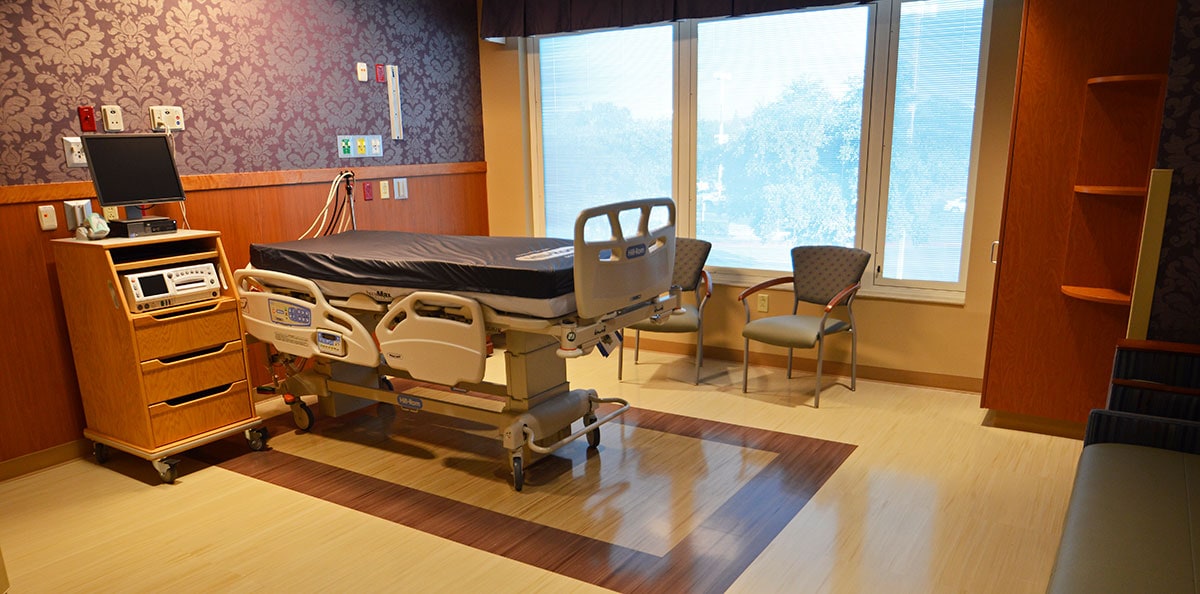
Can the Right Healthcare Flooring Help You Improve Patient Care?
By Bill Imhoff, CEO, Intertech Flooring
What to look for when choosing hospital flooring
Now more than ever, infection control and patient safety are top of mind concerns for anyone entering a healthcare facility. The choices made for flooring can play a bigger role than you might think. What are the best flooring options for a healthcare setting?
Key Factors in Flooring Selection
According to the Guidelines for Design and Construction of Hospital and Healthcare Facilities, there are several important factors to consider in healthcare facility flooring. Among them, “Fire-resistant qualities and materials that limit the production of noxious gases are advised,” the report notes.
In addition, “Optimal hard flooring surfaces are suggested to support ease of cleaning, water and wear-resistance, and resilience against the corrosive properties of germicides or food acids. As carpeted surfaces are potential reservoirs for microorganisms, it is recommended they not be utilized in high traffic areas, areas prone to spills, or in protective isolation rooms.”
That said, what will work best in one healthcare setting won’t necessarily be the most optimal choice for another. An acute-care hospital with COVID-19 patients will prioritize flooring that protects patients from hospital-acquired infections. A skilled nursing and rehab facility will have patient fall prevention as its top of mind priority. Here are some factors to consider when choosing flooring for your healthcare project.
Look for Dense Composition
A floor with a dense, nonporous surface helps repel dirt, making it easy to keep clean with simple dust mopping. Rubber flooring provides that density while negating the need to use wax or other harsh (and potentially irritating) cleaning chemicals. We’ve installed rubber flooring in many hospital settings using Nora products, among others. According to rubber flooring manufacturer Nora, “A dense surface also allows the floor to stand up to water, chemicals and other liquid spills without absorbing them. This includes food spills in cafeterias and break rooms, as well as disinfectants, betadine, blood and urine more common in treatment areas and patient rooms.”
Avoid Hiding Places for Germs
Seams and grout lines are attractive breeding grounds for pathogens. For that reason, flooring that can be installed without seams, cuts and grout lines are ideal in the patient care setting. Seamless options include sheet vinyl, rubber and resinous flooring. Not only do these products offer a safer, more sterile environment under foot, they are highly durable and easy to clean to meet the most demanding health care challenges.
Protect the Environment
Air quality is a serious matter in hospitals, where patients are especially vulnerable to the effects of volatile organic compounds (VOCs) in the air. Choosing the right flooring can go a long way to protecting indoor air quality. For example, Intertech helped Dell Children’s Medical Center in Austin earn points toward its LEED Platinum Designation by choosing flooring adhesives with very low or zero VOCs. For most areas, Intertech installed a natural linoleum floor applied with green label adhesives.
Consider Slip Resistance
The Agency for Healthcare Research and Quality estimates that 700,000 to 1 million hospitalized patients fall each year. There are many reasons why falls occur, and many steps hospitals can take to reduce their frequency. Among them, the AHRQ says, are ensuring slip-resistant flooring and maintaining clean, dry surfaces.
Rubber, linoleum and sheet vinyl are all proven options for slip-resistant floors. These also tend to be low VOC-emitters, are easy to maintain and come in color palettes that facilitate attractive wayfinding designs.
Opt for Noise-Reducing Products
A recent study found that noise in hospitals at times can approach the level of a chainsaw! That obviously does not make for a restful environment for patient healing. When choosing flooring options ask your flooring contractor and design team about the best noise-masking products. Some hospitals are using carpet tiles in hallways to minimize cart and foot traffic noise. Laminate flooring with sound-absorption underlayments is another potential choice.
Maintain a Comfortable Temperature at Less Cost
Energy costs are among a hospital’s biggest expenses. On average, they spend around $13,000 per patient bed each year on heating and air conditioning. Perhaps surprisingly, the right flooring can help reduce those costs. For example, particularly useful in administrative areas, raised access flooring with underfloor air delivery can create more efficient air circulation that requires less power than traditional systems.
Intertech has provided raised flooring since 1991, integrating an underfloor plenum or chase for electrical, voice/data and air supply. Dell Children’s Medical Center is among the hospitals we’ve worked with to leverage this cost-saving solution.
Experience Counts
It is rare that a single flooring product will be suitable (or the best option) for an entire hospital. That’s because the needs and demands of a patient care area are much different than those of the administrative offices, for example. Creating a mix of smart choices that work together cohesively takes experience. That’s why choosing a flooring contractor for a healthcare project should be done only after a careful review of the contractor’s healthcare portfolio experience.
Our work with FKP Architects on Cook Children’s Medical Center in Dallas is a good example of where knowledge and experience came into play. The north tower and medical office building construction project encompassed a five-story, 290,000 square-foot inpatient tower and a 250,000 square foot medical office building to consolidate all ambulatory care programs.
We worked with the architect/design team to create a palette of products and colors that met each area’s needs – sound masking, slip resistance, wayfinding, antimicrobial, you name it. Each floor has its own color groupings using carpet tile, luxury vinyl tile, and rubber tile and stair treads.
Looking for healthcare flooring experts with decades of experience? Talk to Intertech’s healthcare project team. Let’s build something great together.
Recent Posts
Need Samples?
Order from multiple vendors, all at once!
You’ve Got Better Things To Do...
Enjoy our one-stop approach to easy sample orders.